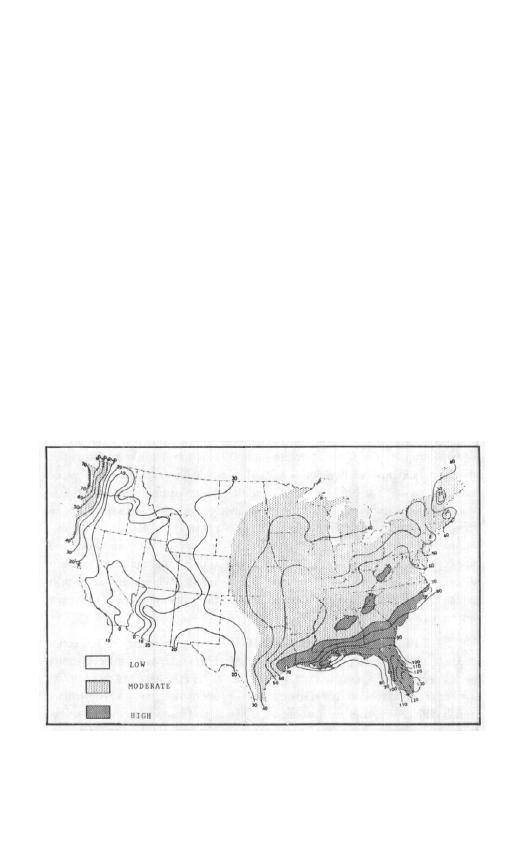

Custom Search
|
|

|
||
 inspections should not exceed that specified for the Annual Inspection Summary.
This inspection does not replace the Annual Inspection Summary.
The climate index map for decay hazard (Fig. 1-1) shows the effect of
geographic location on the rate at which decay advances. The most severe loca-
tion in the United States is the southeastern states where rainfall is high, and
the weather is warm and humid. In the northeast and midwest decay advances
at a somewhat slower rate. Near the coast in the northwest. decay hazard is
moderate, but on the coast it can be severe. Most of the southwest is very dry,
so decay is less hazardous.
1.1.4 TERMINOLOGY. The following terms will be used throughout
the text:
BRASHNESS. A condition that causes some pieces of wood to be relatively
low in shock resistance for the species and, when broken in bending, to fail
abruptly without splintering at comparatively small deflections.
CHECK. A lengthwise separation of the wood that usually extends across
the rings of annual growth and commonly results from stresses set up in wood
during seasoning.
DECAY. The decomposition of wood substance by fungi.
Advanced (or typical) decay. The older stage of decay in which the
destruction is readily recognized because the wood has become punky, soft and
Figure 1-1. Climate index for decay hazard (higher numbers indicate a
higher decay hazard).
1-2
|
 |
|
 |
||